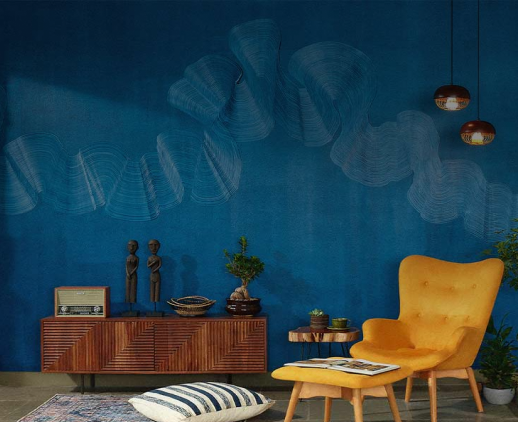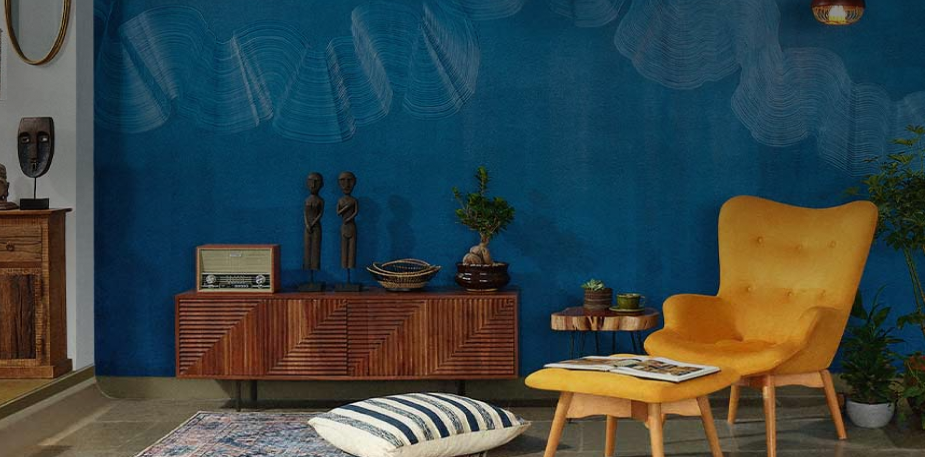Get your home interior design budget estimate
In Ahmedabad, a simple fuss-free interior design

In our series, The Way We Live, featuring homes, people and the way private residences are created, this week we visit designer Aratrik Dev Varman’s house. Tour this home that is frugal in philosophy, and Gandhian in spirit. Plus, he gives us the best tips on designing small spaces
With a home design like this, words from a Western design dictionary fit like a sock one size too large. When we consider minimalism, we think of spaces created by British designer John Pawson, or Japanese architect Tadao Ando, but the same term doesn’t quite describe Mani Bhavan, the Mumbai-based museum that was Mahatma Gandhi’s headquarters in the city. But if you think about it, Gandhiji was the original minimalist. A man who understood the tremendous communicative power of aesthetics, he expressed minimalism’s principles decades before it became a ‘thing’. A space like Aratrik Dev Varman’s exemplifies that Gandhian chic—it is restrained, practical, sustainable, and completely local. Everything in its place, and nothing more than what one needs. As he says: “Frugal intentions are a very Indian mentality.”

The entryway of the flat.
I first met Aratrik seven years ago when I visited the Ahmedabad-based studio of his high-quality clothing brand, Tilla. He is a Chennai-born NID design graduate who stayed on in Ahmedabad after graduation; today the label encompasses clothing, home linen, wallpapers and Café Tilla.
Five years ago, as his growing business moved to a new building, Aratrik decided to convert the old Tilla studio into his residence. It is a ground floor flat within an inconspicuous roadside building. In an even older avatar, this space was a doctor’s clinic with four rooms. Though it is only 800 sq. ft. in size, the designer reorganized the flat into a home that precisely fits his needs. “I broke the dividing walls of the entire house so there are almost no walls inside,” he says about the beginning of the redesign.

Aratrik says: “Break down walls, create open plans and use floor coverings or patterned tiles to demarcate separate functions like dining from seating.”
Minimalism, The Indian Way
Aratrik has a certitude about the kind of work he makes, how he lives and what he believes in, and to that same end his home also represents what you could call self-control as self-expression. “Four rooms have become two large areas, one is my living space, one is my working space. The living area has a bedroom and an open kitchen plus bathroom, and the work space has the dining table that doubles up as my work table and as a space for friends to gather around. There’s no sofa but I have a low diwan that friends can crash on. It is a flat tailored for one-person living. For me and my dogs, it works,” he says.
Since Ahmedabad is dry, hot, and sandy for many months of the year the flat is protected by a green cordon of plants, and low windows that keep the insides moody and cool. As you move inward from the entryway, walking through the living/ dining area, the space becomes more intimate—Aratrik describes it as a “cocoon”. An off-white cocoon that is blessed with 10-ft. high walls left quite empty, so the eye isn’t distracted by anything more than shadows of the plants outside.
Reuse, Recycle and Keep it Fuss-free
All the furniture is low-slung and close to the ground—nothing is above 13 inches. But there is colour too, in the form of hand-painted blue-and-white tiles in the kitchen, via rugs, or a soft-red quilted bedspread from Tripura. “And so, 800 sq. ft. feels roomy and light,” he says. All stuff, like stationery, clothes, cutlery and other accoutrements of daily life are secreted behind purdahs of smart shelving. Simple materials such as kota stone, light-coloured laminates with trims of teak wood, easy-to-handle canvas fabrics, and Nakashima-esque knockoffs pad and plump the space without harassing the eyes.
But the house is also something else: you can see it has beliefs, a philosophy runs through it, uniting the resident, his things and way of life. “Reusing things is at the centre of how this flat has been designed,” he says. “It is frugality, as a value, not just as an aesthetic. In India, we are practical when it comes to design, we’re not fussy, and that’s what makes Indian minimalism, if you can call it that, different from the Western idea of minimalism.”
How do you turn a small space into a spacious home? Aratrik Dev Varman shares his tried-and-proven ideas:
1. Low seating helps increase the feeling of space in a small room.
2. White and other light neutrals work well for walls. Painting doors, windows and cabinets the same colour as the walls will make the space appear larger.
3. Counter tops can easily accommodate shelving and storage underneath, for shoes, luggage, kitchen equipment, washing machine and dryer etc.
4. Don’t decorate for decoration’s sake. When choosing artwork, pick a piece you are emotionally connected to so that it justifies its spot.
5. Textiles- bedspreads, cushions, rugs- are a great way to bring in colour and pattern, rather than hard materials that tend to be more permanent. Oversized prints and bold colour work well in small spaces by becoming the visual focal point.
6. Break down walls, create open plans and use floor coverings or patterned tiles todemarcate separate functions like dining from seating.
7. Floor to ceiling curtains or screens can be used to open or close a space at will in an open floor plan. The sleeping area, for example, can be screened off from a pantry or dining area using textiles rather than a wall.

Aratrik Dev Varman turned his old office-studio into his flat.
8. Furniture such as a divan instead of a couch can double up as a guest bed and is visually less bulky.
9. Long rectangular tables no more than 30” wide do well as work and dining tables.
10. Use light, mobile pieces of furniture like bamboo moodas as accents that can migrate from room to room.
11. Integrate window seats into the openings if possible.
12. Use two sources of low light- wall and table- rather than one strong source that flattens the space.
13. If located near a busy road, use double glazed windows to cut noise and create a tranquil indoor environment.
In the first part of the story we toured Aratrik Dev Varman’s studio and cafe.. He chose a 1970s-era suburban house as the location of his business, converting the space to reflect the minimalist, frugal, crafts-based elegance of his brand.
All images by Ishita Sitwala

Get Started with your interior design journey with us!
Speak to our design professionals
What’s the status of your home possession?
What’s the condition of your home/space?
Will you be living in your space during the renovation?
 Previous Question
Previous Question
Is your interior design budget over 4 lakhs?
 Previous Question
Previous Question
Book next available appointment slots with our experts!
Please Select Date and Day
 Previous Question
Previous Question

Something went wrong!
We were unable to receive your details. Please try submitting them again.

Appointment Scheduled!
Thank you for giving an opportunity to Asian Paints Beautiful Homes Service! Our Customer Experience Specialist will get in touch with you soon.
Appointment Date & time
Thank You!
Our team will contact you for further details.
What’s the status of your home possession?
What’s the condition of your home/space?
Will you be living in your space during the renovation ?
 Previous Question
Previous Question
Is your interior design budget over 4 lakhs?
 Previous Question
Previous Question
Book next available appointment slots with our experts!
DEC 2023
Please Select Date and Day
 Previous Question
Previous Question

Something went wrong!
We were unable to receive your details. Please try submitting them again.

Appointment Scheduled!
Thank you for giving an opportunity to Asian Paints Beautiful Homes Service! Our Customer Experience Specialist will get in touch with you soon.
Appointment Date & time
17 Oct 23, 03.00PM - 04.00PM











































